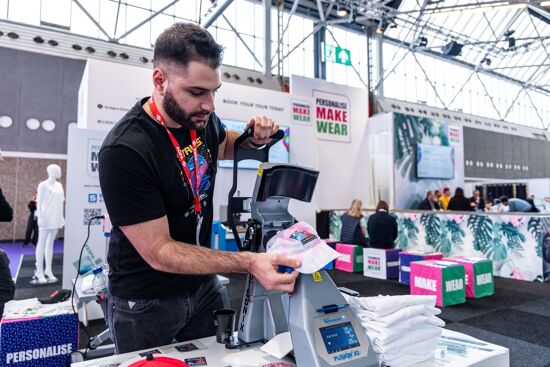The sustainability conversation

Laurel Brunner discusses the ins and outs of the conversation around environmental sustainability and its relevancy in the print industry
Numerous users of HP Indigo technologies attended the DSCOOP in Vienna. Participants were eager and very passionate to share as they were confident that they were in the right environment to do so. People did not forget that they were amongst potential competitors but there was a great atmosphere of sharing and learning. The atmosphere was uplifting but it was evident that few contenders in the graphics industry have the confidence to discuss sustainability with a straight face. It is almost as though the environment is not a ‘cool’ topic for business professionals to discuss.
This attitude needs to change because print service providers are at the front line in regard to correcting the uninformed view that print is bad for the environment. That is the easy part, the problem is that too many graphics professionals don’t want to talk about sustainability as they are not equipped for the conversation.
This is not a surprise as people usually don’t see environmental protection as their problem. What’s worse is that people are reluctant to sound like tree-hugging hippies, therefore they are unwilling to discuss sustainability. Putting egos aside, having this conversation is difficult as the language is unfamiliar and the references for environmental vocabulary is ambiguous. How many print service providers are comfortable having a conversation about the carbon footprint of a particular print job? Very few. How many can answer questions about ISO standards that are relevant to the graphics industry in general and the environment? Even fewer.
But does this matter? Is it necessary for business owners in the print industry to confront this possibly steep learning curve? Yes, it matters because sustainability is everyone’s responsibility and the future of the graphics industry is dependent on its environmental accountability as much as any other industry. It matters because there are companies around the world where conversations around environmental impact have become the rule rather than the exception.
How you start the conversation depends on the clients that you work with and your own knowledge. Think of ignorance as an opportunity, ensure that you share with your customers what you want to achieve with them and take the discussion from there. As painful as it may be, it’s important to read about sustainability in the graphics industry, the standards that you can use and the sustainability policies of big brand owners like Unilever, IKEA, Diageo and H&M. It’s not a difficult conversation to have, but discussing sustainability does require you to have something to say and the confidence to say it. Otherwise, the conversations will occur without you or your input.
Source: This article was produced by the Verdigris project, an industry initiative intended to raise awareness of print’s positive environmental impact. This commentary helps printing companies keep up to date with environmental standards, and how environmentally friendly business management can help improve their bottom lines. Verdigris is supported by the following companies: Agfa Graphics, Spindrift.click, EFI, FESPA, HP, Kodak, Kornit Digital, Ricoh, Splash PR, Unity Publishing and Xeikon.
Topics
Interested in joining our community?
Enquire today about joining your local FESPA Association or FESPA Direct
Recent news

Special Effects in DTF Will Make Your “Prints” More Memorable
The DTF market is expanding with new vendors and innovations like multi-head printers enabling diverse ink options (spot, neon). Decorative films offer streamlined special effects. Keypoint Intelligence tested metallic and glitter films, noting varied ease of use and wash durability. New technology using adhesive and foil directly promises further creative advancements in DTF.

SmartHub – Expectations, opportunities and why you should attend!
The SmartHub at Personalisation Experience 2025 in Berlin will showcase personalisation and smart production opportunities across industries like textiles. Featuring a Smart Factory Trail with brands like Inkcups and Trotec, and a conference with experts discussing AI, mass customisation, and profit strategies, it offers insights into reducing waste and boosting efficiency through digital methods. Panel sessions will explore growth, automation in textiles, and smart manufacturing.

How is AI revolutionising Large Format Print?
Nessan Clearly discusses how AI in print relies on data pattern matching, already enhancing software for large format providers. He predicts that this will result in increased AI integration in workflow planning, job queue management, colour correction, image upscaling, and predictive maintenance via sensors and vision systems, ultimately streamlining operations and offering greater flexibility.

One Ink for All? Exploring Pigment in Textile Printing
Digital textile printing faces complexity due to diverse substrates requiring specific inks. The industry seeks a universal ink, with pigment ink showing potential. While traditionally for natural fibres, advancements aim to broaden its application, simplify processes by reducing pre/post-treatment, and improve sustainability, though challenges like hand feel on garments remain.